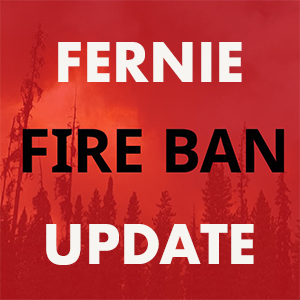It would spell disaster for some Kootenay blue-listed fish populations and streamside wildlife habitats. It would cut right through the heart of rare old growth forests and protected wilderness areas. It’s the Glacier-Howser Independent Power Proposal (IPP) — and it’s back from the dead.
AXOR Power recently made a second application to the B.C. government to get tenure for its controversial Glacier-Howser-Birnam-Behrman-Suck Creeks Diversion project—a project regional environmental groups say is anything but green.
AXOR made an initial application last year that was denied.
“Wildsight is extremely supportive of green power,” said Dave Quinn, Wildsight’s Purcells program manager. “But this proposal is not green—it affects fish, grizzly and goat habitat and rare intact old-growth forests. Simply put, 100 megawatts isn’t worth the environmental destruction to this sensitive area.”
AXOR wants tenure to five streams that drain into the Duncan Reservoir north of Kaslo. The Quebec company would divert portions of the streams through two massive tunnels, large enough to drive a dump truck through, into power plants on the reservoir. From there, it would shunt power east across the Purcells to Invermere. The new transmission line—over 90 kilometres’-worth — would cut right through the protected old-growth and wilderness areas of upper Howser and Stockdale creeks.
“Glacier-Howser is one of the most controversial IPPs in B.C. right now,” Quinn said. “It involves the damming and diverting of water from five creeks – Glacier, Howser, Berhman, Suck, and Birnam — and would drastically reduce the flow in critical riparian ecosystems, including important spawning habitat for blue-listed bull trout – all in a region that has already lost much of its valuable valley bottoms under the Duncan, Mica, Revelstoke, Whatshan, and Arrow reservoirs.”
AXOR made its latest application to the provincial Environmental Assessment Office (EAO) in early May, but the Environmental Assessment Office was unable to give an exact date.
“The EAO has 30 days to accept or decline the application,” Quinn said. “After that, public meeting dates for Invermere, Meadow Creek, and Kaslo will be announced.”
Conservation groups are calling for a two-year moratorium on all IPP water licenses until the B.C. Energy Plan is updated to revoke Bill 30, to take care of the “50-megawatt” loophole, and to account for cumulative impacts.
The Province introduced Bill 30 in 2006. “Bill 30 took power from the regional districts,” Quinn said. “Suddenly, they suddenly had no local zoning authority over IPPs. Companies like AXOR aren’t held accountable to any local level of government.
“The loophole is that any IPP under 50 megawatts doesn’t require a provincial environmental assessment—so there are a lot of 49-megawatt proposals right now.”
There are more than 70 applications like Glacier-Howser in the Kootenay region, where huge swaths of rich riparian habitat (300 kilometres, by some estimations) have already been sacrificed to hydroelectricity and flood control. “This makes creeks like Howser and Glacier even more important as remaining intact riparian habitats,” Quinn said. “And it’s important to look at the cumulative effects of all these impacts.”
A moratorium will ensure the projects are “green”—not “greed”
“Green energy is good,” Quinn said. “But what’s happening now is a liquid gold rush, a ‘free-for-all’—not green energy. There are no checks and balances to make sure corporations use public lands responsibly.
“Some IPP proposals in areas close to towns, areas already impacted by development, make sense as green energy,” Quinn said. “But right now local citizens have no way to help determine which projects make sense, and which projects—like Glacier Howser—make no sense at all. And that’s why we’re asking people to join us—ask the Province to put a moratorium on all IPP licenses for two years. We need to reestablish what is acceptable and what is out of bounds.
“Once the waterways are diverted, and the pristine valleys cut up with transmission lines, they’re irrevocably damaged,” Quinn said. “Kootenay citizens need to do everything they can to protect our wild rivers—if we don’t, no one else will.”
About Wildsight
Wildsight works locally, regionally and globally to protect biodiversity and encourage sustainable communities in Canada’s Columbia and Southern Rocky Mountain region. This area is internationally recognized as a keystone to conservation in western North America. For more information, please visit www.wildsight.ca.
Contact: Dave Quinn, Purcell program manager
Wildsight • 250.427.5666 • c 250.427.8878 • dave@wildsight.ca
























